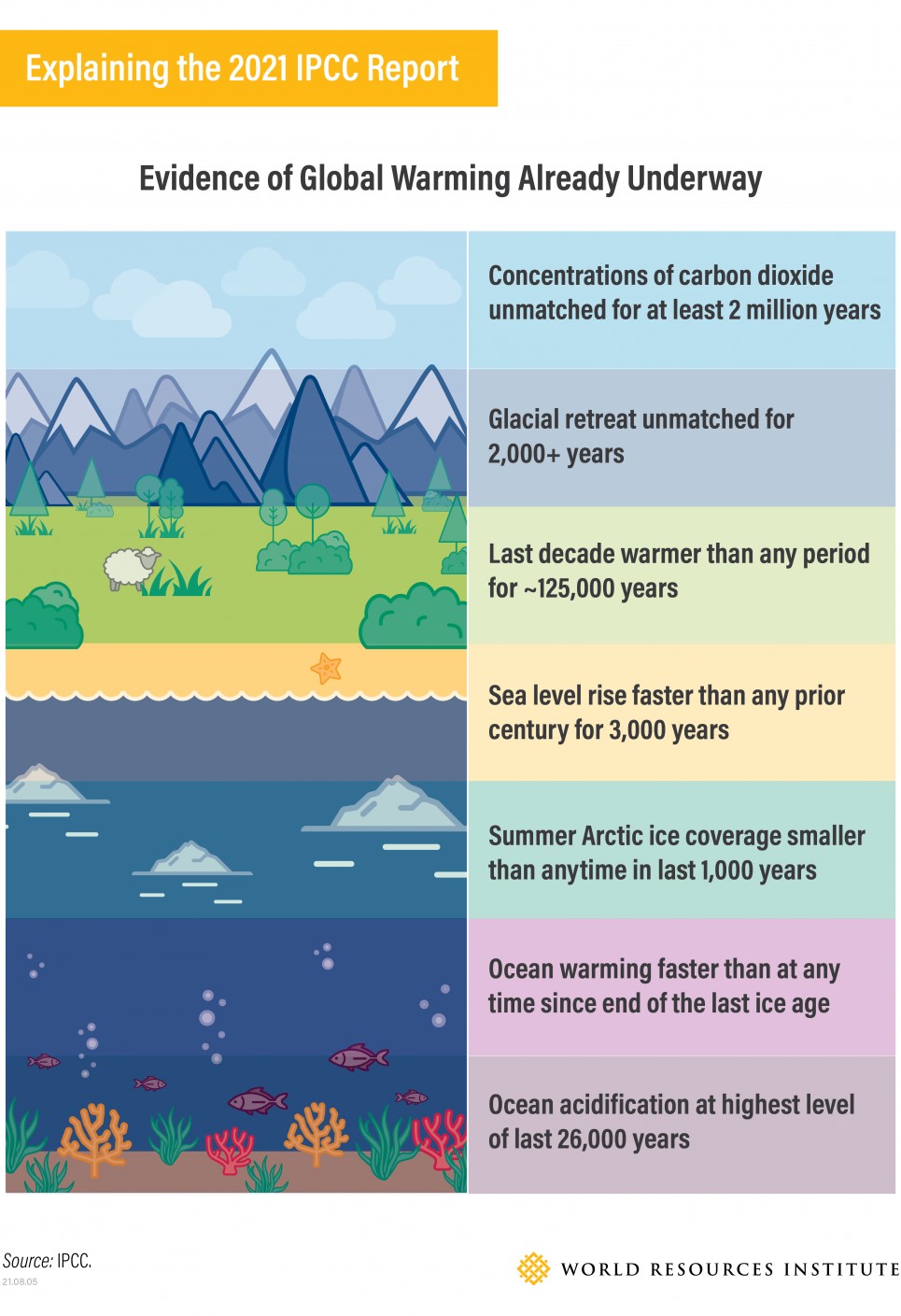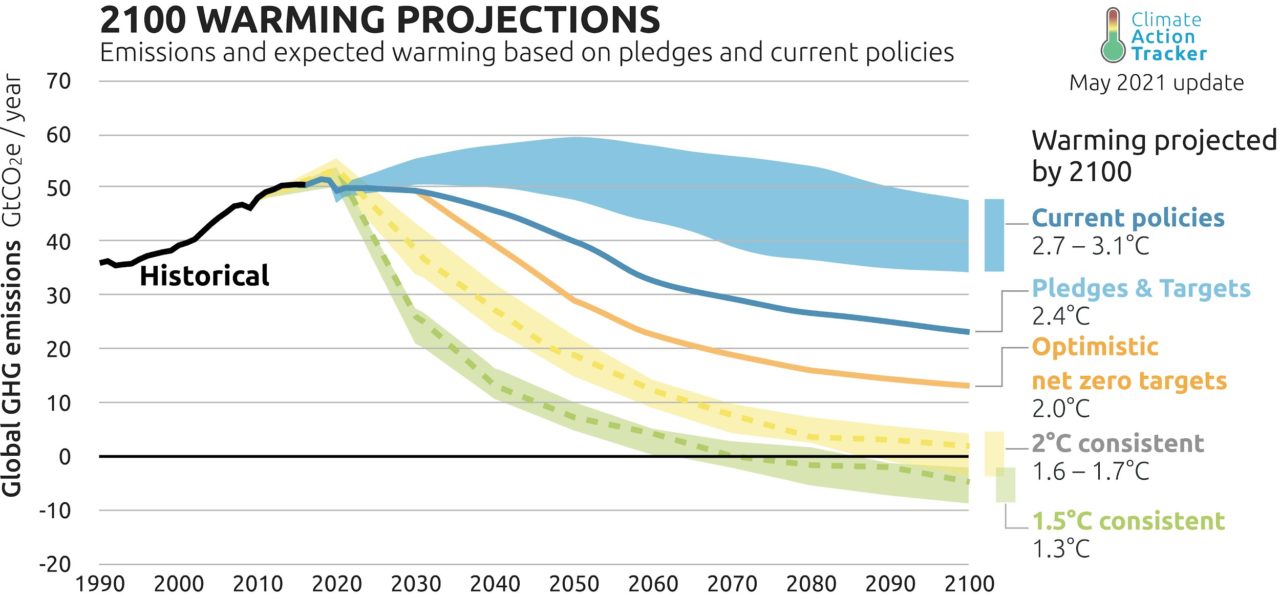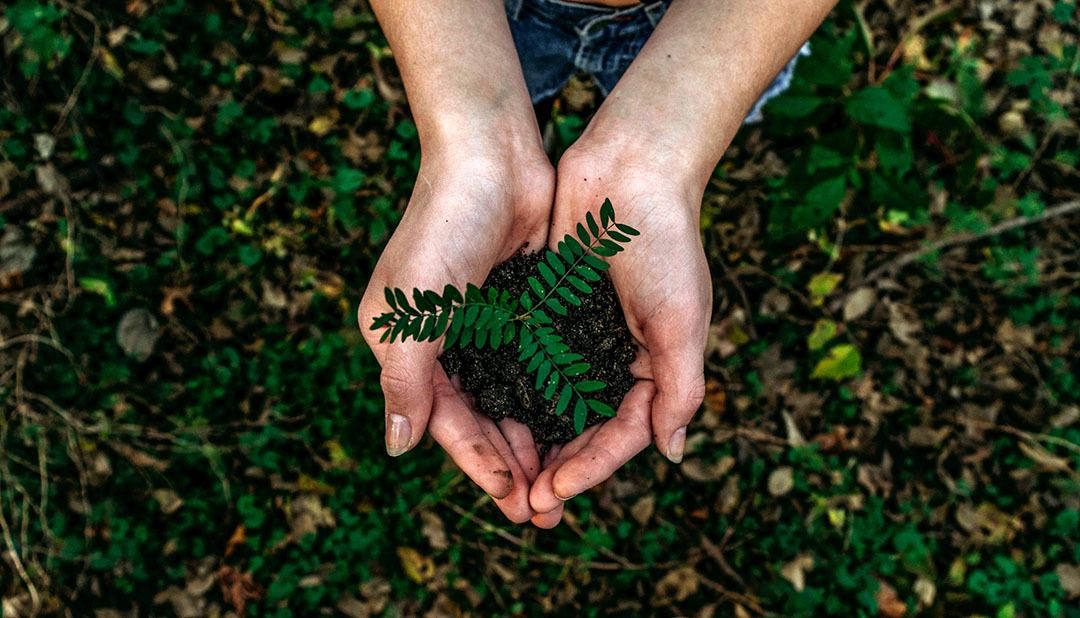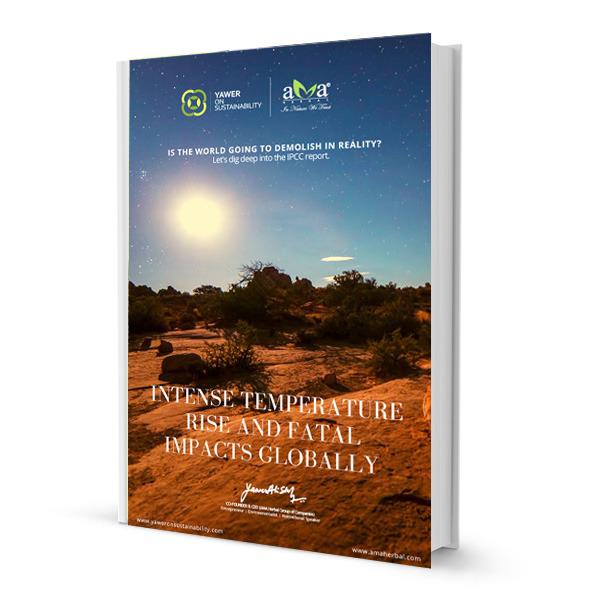The latest IPCC Report is indicating towards intense temperature rise and fatal impacts globally
We always show extreme anguish towards extreme weather and forget our destructive actions easily till the arrival of the next devastating flooding, widespread fires in forests, surprising temperature increase in cool climate areas, etc. Is merely our anguish enough for initiating the change or do we require to shift towards more sustainable preferences for the purpose?
It is quite shocking to know that between June and mid of July 2021, the Arctic lost an area of sea ice identical to the volume of Florida. Most of us would think about how it is related to us and why should we worry? According to the latest report of the world’s most trusted body on climate science, the Intergovernmental Panel on Climate Change (IPCC) has mentioned that it is just a teaser of the devastation that is to come.
As per the IPCC report,
the global temperature is expected to reach or surpass 1.5°C of warming over the next 20 years under all scenarios. It indicates that we are about to witness the rapid sea-level rise, shorter winter seasons and lengthier warm seasons, and heightening events of heatwaves, etc. For the very first time, IPCC has provided a region-wise analysis of climate change. IPCC has assessed 11 regions across the globe that will assist in assessing the risk and the required adaptation measures accordingly.

What will eventually happen if we continue on the carbon-intensive pathway?
If the world continues to travel on the carbon-intensive pathway, global warming could rise to 3.3-5.7 degrees Celsius higher than the pre-industrial phase by the climax of the century.

*source:
climateactiontracker.org
The report has also stated that even with the rigorous measures for emissions reduction, we have already dented the climate system with lots of warming. We haven’t yet witnessed the most lethal and destructive extreme weather scenarios.
Time has come to invest more in establishing climatic resilience with our sustainable actions.
Is limiting global warming still in our hands?
Every big challenge comes with an opportunity for establishing an inspiring change. Can we still limit global warming to 1.5
o Celcius by the end of the century? Yes, we can, but it won’t be an easy task for sure.
At last, the situation has arrived that big government agencies are taking part in sustainability. They are working, studying, and bringing out the data, opening the eyes of the unconscious people. We have been speaking on these topics for so many years now. We have been witnessing the changes which are happening in our surroundings. Remembering those days when I was in a hostel lying on the floor just under the ceiling fan at the temperature of 48-49, and we were having comfortable nights.
Today, even the air conditioners can’t give that comfort, thanks to global warming, due to our climatic negligence. So, we have physically witnessed it, we have been talking and warning about it. Though, it is unfortunate that the reaction to the people was not that much as it was happening. But now, big government agencies are getting involved in it, and we thank them for this revolutionary action. We feel this might bring more attention to the people in general around this, so that they may take their responsibilities to their bit with a vision to control the climate.
It just can’t happen by government actions, or by any NGO or people like that coming into the frame. It may be possible when you digest it within and let it live in your blood. When that blood flows it tells you, don’t do this and don’t do that. It is the only way that may help to control the climate when you take the calls with conviction.
There are five steps that you can do:
- Control water usage as water is one of the most substantial natural sources needed for our survival.
- If the global temperature is rising, and it is directly connected to the sea, it has direct connectivity with water, and the availability of water in your area, and if you have that, the survival chances become better. Global warming is the one which is affecting the water levels going down. It is because rains are affecting, and the circulation of the water economy is also suffering, and this is how it is. Therefore, conserving water should be our priority.
- Don’t increase carbon footprints, and at least try to control them.
- Go green. Greener solutions like eco gardening and plantations can turn things around
- Electric vehicles and electric stuff are gradually getting into the mainstream. Try to adopt them as much and as fast as you can.
These could be your actions that you can take.
Can Antibacterial finishes and washes be the salvation?
Wearing clothes more than once as we do because we are not as much exposed to the sweat as we were exposed earlier. Antibacterial finishes and antibacterial products are available. Try to use them as they would help reduce the bacteria formation and the gap between the washing of clothes increases. So, earlier if you were washing your apparel after two wearing a, now you should wash after 5 or 10 wearings. It will help conserve water eventually. Washing now a day consumes energy in the form of washing machines and dryers you use. You can conserve water and energy by embracing sustainable products for the purpose.
The right way of plantation can be the game-changer
The plantation is considered to be a big tool for reducing carbon footprints in the surroundings. It is also observed that when we visit natural habitats like jungles, the percentage of oxygen is much higher and purer where we have so many trees. Is it just because we have trees over there? Or is there any twist in the tale? Is it because of the way trees are planted? If you take my opinion there is a mix of both the options. The way that trees are planted is equally significant to the number of trees over there.
If we go in the vicinity of Connaught Place, Barakhamba road, or any other proximity of any city, you will see greenery on both the sides of roads, even then such areas have very high pollution levels over there. But if you go to the jungle, you will find a similar kind of greenery or maybe lesser but the pollution levels over there would be much lesser. What is the reason behind it? The major reason is that when we come to the city and do plantations, the very first thought that comes to our mind is that the tree should look beautiful. It should be presentable, equal in height and proportion, there should be no mergers like branches or creepers etc.
A Japanese technique named Miyawaki can be extremely helpful for the plantation in urban areas. According to this technique, different kinds of plant species are planted at small distances in the vicinity of a bigger plant. When they grow they all merge. They may not look appealing to the eyes but they have the largest ability to consume Carbon dioxide. And at the same time, the plants are grown in a way that when one plant gets weak the other one supports, and when the other one gets weak the previous one supports. So, you don’t require that much care for them as they are self-sufficient to do that.

This is exactly the difference between the garden in a jungle, the garden in a city. Having a garden in the city requires more human interference because you need to manage it. On the other hand, a garden in the jungle doesn’t require any such care because the jungle is managing it, and that is more eco-friendly for sure. The Miyawaki technique of gardening is popular, and even recently I heard in Bhopal at the Bhadbhada Dam where a garden is about to be made with this technique. They have a belief that a certain amount of oxygen will be purified in its surroundings by all means.
So, this Miyawaki kind of gardening technique should come into the knowledge of more and more people in the rural and urban areas altogether. In addition to that, such kinds of research are also required to be done. So that the plants like we have legume plants which increase the fertility of the soil. Similarly, we require better plants that may help increase the ability of the atmosphere to eat more carbon dioxide than the normal capacity of a plant. These kinds of research are also required by agriculture and are also required for the betterment of climatic prosperity.

 *source:climateactiontracker.org
The report has also stated that even with the rigorous measures for emissions reduction, we have already dented the climate system with lots of warming. We haven’t yet witnessed the most lethal and destructive extreme weather scenarios. Time has come to invest more in establishing climatic resilience with our sustainable actions.
*source:climateactiontracker.org
The report has also stated that even with the rigorous measures for emissions reduction, we have already dented the climate system with lots of warming. We haven’t yet witnessed the most lethal and destructive extreme weather scenarios. Time has come to invest more in establishing climatic resilience with our sustainable actions.
 This is exactly the difference between the garden in a jungle, the garden in a city. Having a garden in the city requires more human interference because you need to manage it. On the other hand, a garden in the jungle doesn’t require any such care because the jungle is managing it, and that is more eco-friendly for sure. The Miyawaki technique of gardening is popular, and even recently I heard in Bhopal at the Bhadbhada Dam where a garden is about to be made with this technique. They have a belief that a certain amount of oxygen will be purified in its surroundings by all means.
So, this Miyawaki kind of gardening technique should come into the knowledge of more and more people in the rural and urban areas altogether. In addition to that, such kinds of research are also required to be done. So that the plants like we have legume plants which increase the fertility of the soil. Similarly, we require better plants that may help increase the ability of the atmosphere to eat more carbon dioxide than the normal capacity of a plant. These kinds of research are also required by agriculture and are also required for the betterment of climatic prosperity.
This is exactly the difference between the garden in a jungle, the garden in a city. Having a garden in the city requires more human interference because you need to manage it. On the other hand, a garden in the jungle doesn’t require any such care because the jungle is managing it, and that is more eco-friendly for sure. The Miyawaki technique of gardening is popular, and even recently I heard in Bhopal at the Bhadbhada Dam where a garden is about to be made with this technique. They have a belief that a certain amount of oxygen will be purified in its surroundings by all means.
So, this Miyawaki kind of gardening technique should come into the knowledge of more and more people in the rural and urban areas altogether. In addition to that, such kinds of research are also required to be done. So that the plants like we have legume plants which increase the fertility of the soil. Similarly, we require better plants that may help increase the ability of the atmosphere to eat more carbon dioxide than the normal capacity of a plant. These kinds of research are also required by agriculture and are also required for the betterment of climatic prosperity. 
